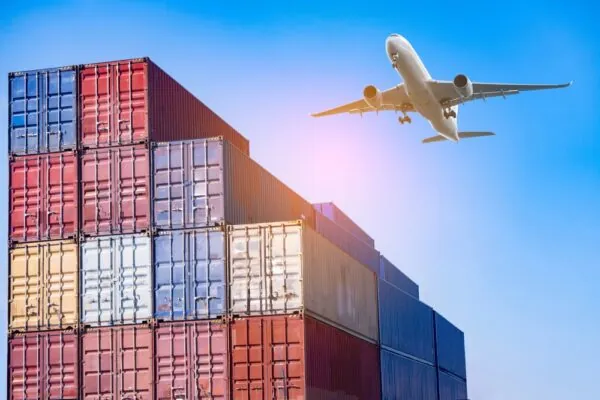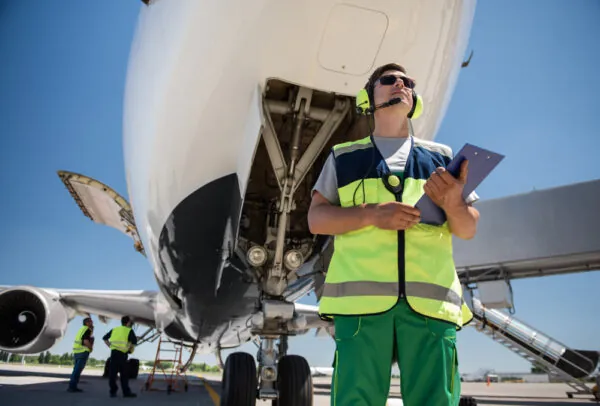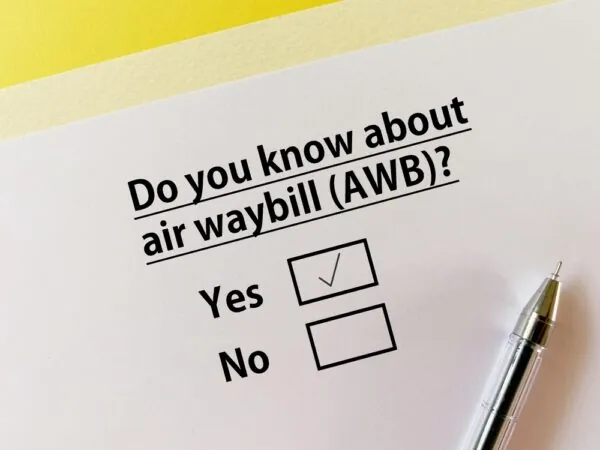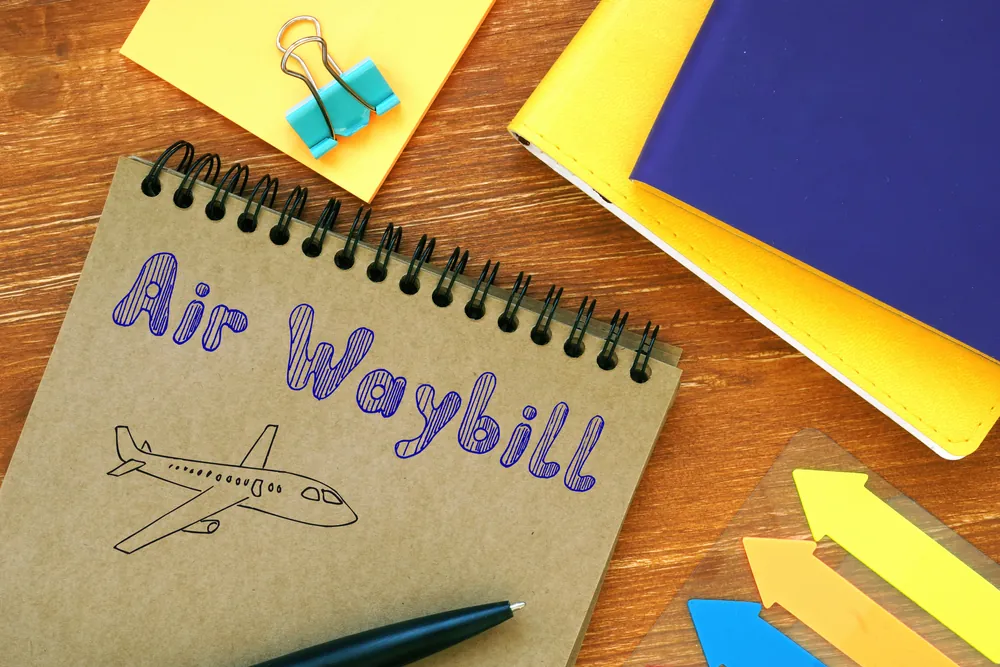What Is An Air Waybill (AWB)?
Do you want to know what an air waybill is? 80% of people want to understand its significance, and 20% are looking for a comprehensive guide on how to use one.
Look no further! Here at FreightCenter, we have you covered and will explain all things AWBs, from their function to the steps to obtain one. Let’s get started…
The Basics
Any shipping often requires paperwork and documentation. An air waybill is vital for shipping via air. The air waybill serves as a contract to outline the terms and conditions of the transport agreement between the shipper and the airline to ensure successful cargo handling during transit.
It also acts as a receipt to confirm that the airline received the freight and a document of title, also known as a consignment note, confirming cargo ownership during transit.
The concept of the air waybill was introduced in the early 20th century as the aviation industry took flight. It was in the 1950s that the modern system was formalized, with the International Air Transport Association (IATA) playing a pivotal role in standardizing formats and procedures. An AWB is enforceable by law because of its vital importance.
An air waybill consists of many copies of paperwork, but in the age where everything is digital, e-AWBs have become the default through the Multilateral Electronic Air Waybill Resolution 672. As of 2019, paper AWBs are no longer a requirement.

What Information Is Included On An Air Waybill?
There are many vital components of an air waybill. Its functions go beyond that of a receipt, contract, and document of title, and that’s why it is such a crucial part of international air shipping.
It includes details that are required for customs documentation and clearance. It enables authorities to verify the value and the contents of the shipments coming into the country.
The AWB is also used for tracking. It has an 11-digit identification code in the upper right-hand corner that the airline or freight forwarder can use. The first three digits are the carrier’s ID number.
The following seven digits are the AWB’s serial number. The last digit, the check digit, is calculated by dividing the AWB serial number by seven.
The bill can also record charges such as freight costs, surcharges, or additional fees associated with the cargo. Lastly, the document can be used to substantiate insurance claims in cases of damage or loss since it provides a record of all the shipment details.
This is why AWBs must be accurate and compliant with international regulations to avoid any delays or issues like fraudulent activity.
So, Who Exactly Uses An Air Waybill?
The AWB applies to all parties involved in the shipping process.
The shipper uses the air waybill to ensure that their freight is accurately documented to facilitate transportation. The consignee, the person or business receiving the cargo, uses the AWB to verify that they have received the correct shipment and claim it once it arrives.
The AWB is also used to help verify the contents of the cargo for the customs authorities.
Since the airline is responsible for issuing the air waybill, they use it to manage the shipment. In cases where freight forwarders handle the logistics, they manage the AWB.
The AWB is issued in different colors to differentiate which copy is for whom:
Shipper’s copy: Blue
Carrier’s copy: Green
Receiver’s copy: Pink
Receipt of goods: Yellow or Brown
Four or more copies for various purposes, such as for customs and airports: White

Types of Air Waybills
Two types of air waybills are used, and it’s essential to know the difference between them. The two types are a master air waybill (MAWB) and a house air waybill (HAWB).
The master air waybill (MAWB) is used by the airline and consolidator to manage and track large volumes of goods from multiple shippers. It’s typically issued by the actual carrier or their freight agent.
It adheres to the IATA regulations and states the terms and conditions of the airlines. It contains one number, the MAWB number.
The house air waybill (HAWB) provides transparency and tracking at the level of individual consignments within a larger consolidated shipment. The consolidator of the forwarding company issues it, and it contains two numbers. It includes the HAWB and MAWB number.
Between a master air waybill and a house air waybill, the master air waybill is used more frequently because it covers the entire shipment and is more suitable for large-scale logistics.
How To Obtain An Air Waybill
Now that you know exactly what an air waybill is and why it’s so important, let’s explore the steps it takes to obtain one for your next international shipment.
Step 1: Prepare the shipment – Ensure the freight is appropriately packaged and labeled according to the airline’s and destination country’s requirements.
Step 2: Contact – Once your cargo is ready, you can contact the airline to obtain an AWB. If you work with a freight forwarder, they will manage documentation and the shipping process for you.
Step 3: Complete the form – Next, you need to complete the AWB form by including all necessary information, such as:
- The shipper’s name and address
- The consignee’s name and address
- Departure and destination locations
- The freight’s description, including weight, dimensions, and special handling instructions
- Flight details, if known
- Any other special instructions or requirements for the shipment
Step 4: Submit the form – Again, no need to worry if you’re in contact with a freight forwarder. They handle it for you. You can submit the form online or at the airline’s cargo office if you’re dealing directly with the airline.
Step 5: Payment – Payment to cover the transportation costs must be settled before the AWB is issued.
Step 6: AWB received – The bill is issued in several copies designated for the parties involved in the shipment.
Step 7: Attach to the shipment – The AWB must be attached to the cargo in a secure and accessible manner so that it can be identified during transit.
Step 8: Tracking – The AWB number can be utilized to track the shipment from beginning to end. Depending on the case, it can be tracked through the airline or freight forwarder tracking system.
Step 9: Delivery and handover – Once the cargo arrives at its international destination, the consignee will present the AWB to claim the shipment officially.
Step 10: Success – Congratulations! You’ve shipped your freight internationally via aircraft while obtaining an AWB.
It’s important to be aware of all the documentation needed for your next shipment, and that includes the air waybill. By understanding the significance of air waybills, you can easily navigate the complexities of air freight, leading to smoother operations.



